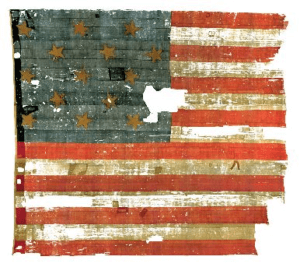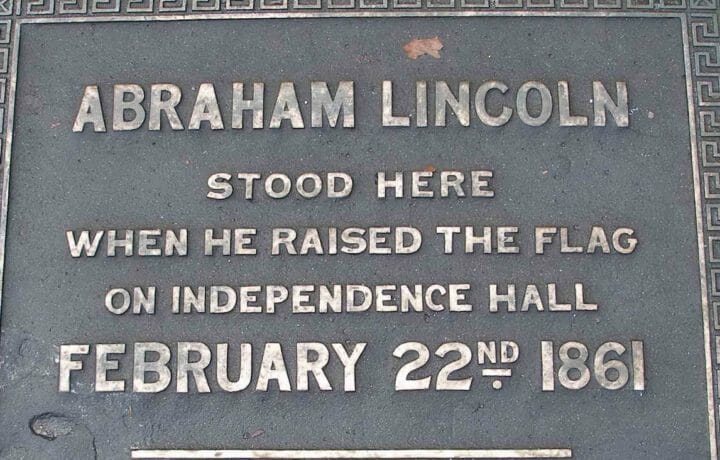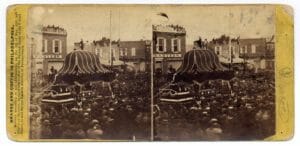A Widow, a Lawyer, a Brewery, and “The Star-Spangled Banner”

The union forever
That day President-Elect Lincoln raised a flag specially made for the occasion. The flag’s 34 stars celebrated the addition of Kansas to the Union. They also reaffirmed that all of America, even her rebellious states, were still one United nation. Even after war began, the Union would not remove the stars of the Confederate states from the Red, White and Blue.
After Lincoln raised the special flag, he stood in the room where the Declaration of Independence and the Constitution were signed, and vowed that he would rather be assassinated than fail the principles that our Founders set forth in the Declaration of Independence.
After the battlefield agonies of the Civil War ceased in the spring of 1865, Lincoln was true to his promise. The Union and the dreams of our Founders would live on – but Mr. Lincoln would not.
After his assassination, Lincoln’s body was returned home to Illinois by train for burial. Again, Lincoln returned to Independence Hall, where his body lay in state with the Liberty Bell and a statue of George Washington. So many came to mourn him that they had to build stairs up to the windows of the building just to have enough entrances and exits to accommodate all the visitors. Over 100,000 people flooded the city to pay their respects to the man who preserved the Union.
Let’s take this Flag Day to admire all the history our flag has seen us through – and take hope in all she’ll see in the years to come.





